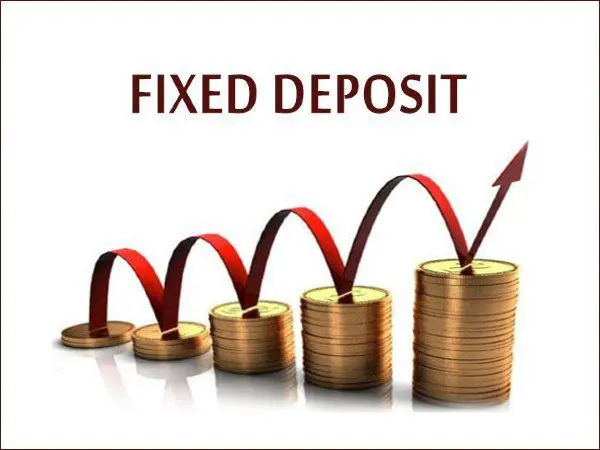If you wish to invest in fixed deposits, then you should make sure that you absorb all available information about this type of investment. FDs (fixed deposits) are investment choices which enable investments of a particular sum for a fixed duration at a rate of interest which remains fixed. Throughout the course of your FD, even if the applicable interest rates increase or decrease, you will be eligible for the interest rate that was committed to you by the financial institution. FDs usually pay out a higher interest rate as compared to savings bank accounts. The rates may hover anywhere between 6-8% on an average.
Of course, you will benefit from deploying your money in a fixed deposit investment instead of keeping it lying in your savings bank account. The interest may be paid out on a monthly, quarterly, half-yearly or annual basis. Senior citizens may witness FD rates increasing by approximately 0.5% or so. There are FDs offered by Indian banks and non-banking finance companies (NBFCs) and these are regulated by the Reserve Bank of India (RBI). There are corporate FDs available in the market as well, which are provided by companies which are looking at raising capital from the market. Corporate FDs usually have higher interest rates but they have comparatively higher risks in comparison to bank fixed deposits (FDs).
Major benefits of Fixed Deposits
- Safe investment– FDs are mostly secured by the Government up to Rs. 5 lakh as per the latest modification by the Deposit Insurance and Credit Guarantee Corporation and they are extremely low-risk options for investments.
- Loan facility– You can borrow up to 80/85% of the deposit amount in your FD as a loan if you require funds urgently. However, this is valid for bank fixed deposits only.
- Lower maintenance– Unlike other types of investments like mutual funds, stocks or real estate, you will not have to track FDs on a monthly or daily basis or do any periodic following up.
- Duration – You can make your deposit for any duration right from half a month even 10 years or so.
Cons of investing in FDs
- Returns – FDs carry lower risks and hence the returns are mostly lower in comparison to high-risk investment options such as mutual funds and stock investments. Moreover, senior citizen FD rates are usually higher by a few percentage points.
- Lock-In period– FDs have compulsory lock-in periods for the duration that you choose. The money will be fully locked without withdrawal facilities for this duration. You will have to break your FD if you require money on an urgent basis. Unlike a deposit made in a savings bank account, you will not enjoy the flexibility of accessing vital funds whenever you require the same. You will also have to pay penalties for breaking your FD.
- Taxation aspects– Unlike many other investments, interest earned from FDs will be added to your regular income and taxed as per the applicable slab. You can only opt for a 5-year tax-saver FD for saving taxes on interest under Section 80C. If the interest income surpasses Rs. 10,000 in a financial year, then TDS will be cut at 10% by the bank. If you are not in a taxable bracket, you can provide Form 15G/15H for asking the bank not to deduct TDS on the interest income that you earn.
Key aspects worth keeping in mind
- Have your nominee for the fixed deposit which ensures fast withdrawal and for bypassing any hassles in case of your unfortunate demise.
- Fixed deposits from corporate companies may pay higher interest although the risk quotient is way higher in comparison to fixed deposits offered by banks. The corporate FDs do not come with any guarantee on the deposits.
- Whenever there is increasing inflation, you should bypass fixed deposits since your investment will naturally witness erosion in its overall purchasing power.
- While making the deposit, make sure that you check the clause that stipulates the penalties for early withdrawals.
- If you wish to withdraw funds for any emergency, instead of breaking your fixed deposit, you should consider getting overdrafts up to 85% on the fixed deposit instead of paying up the penalty for withdrawals.
- You can consider staggering and splitting your investment in FDs and make multiple deposits of smaller sizes. You can consider spreading out these FD investments throughout diverse maturities instead of making a single lump-sum deposit. This will help you avoid paying penalties on the whole amount in case of any premature withdrawal and you will only have to pay penalties on the limited amount which you wish to withdraw.
- For fixed deposits which have tenures exceeding one year, in case your interest is paid out at maturity, taxes on the interest income from FDs will be due for the earned interest amount, irrespective of whether you have got the interest or not.
These are some key aspects that you should know about Fixed Deposits (FDs). Investing in FDs should be one part of your portfolio, i.e. safe and low-risk fixed income generating instruments. However, you should balance this out with slightly more high-risk instruments such as mutual funds. This will diversify the portfolio and help you achieve the right balance between risks and rewards. It goes without saying that this approach will help you earn higher returns in the long term.






